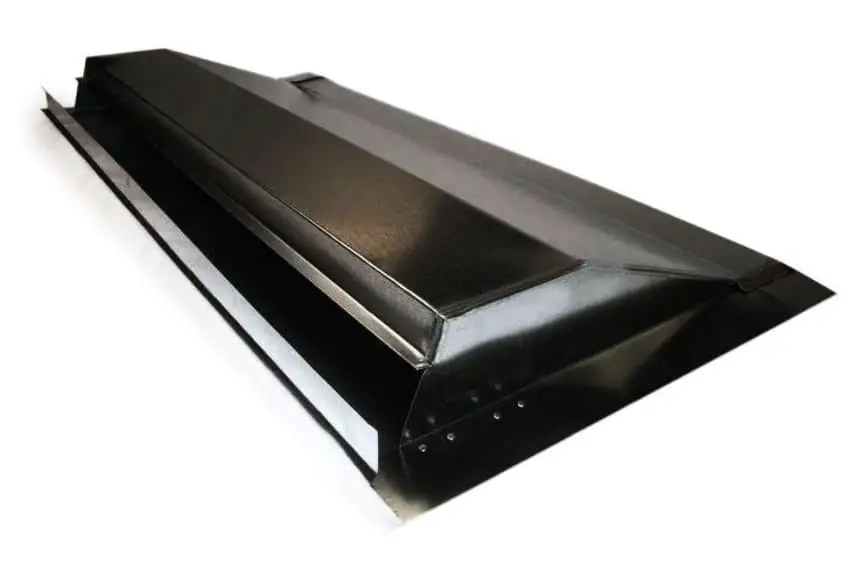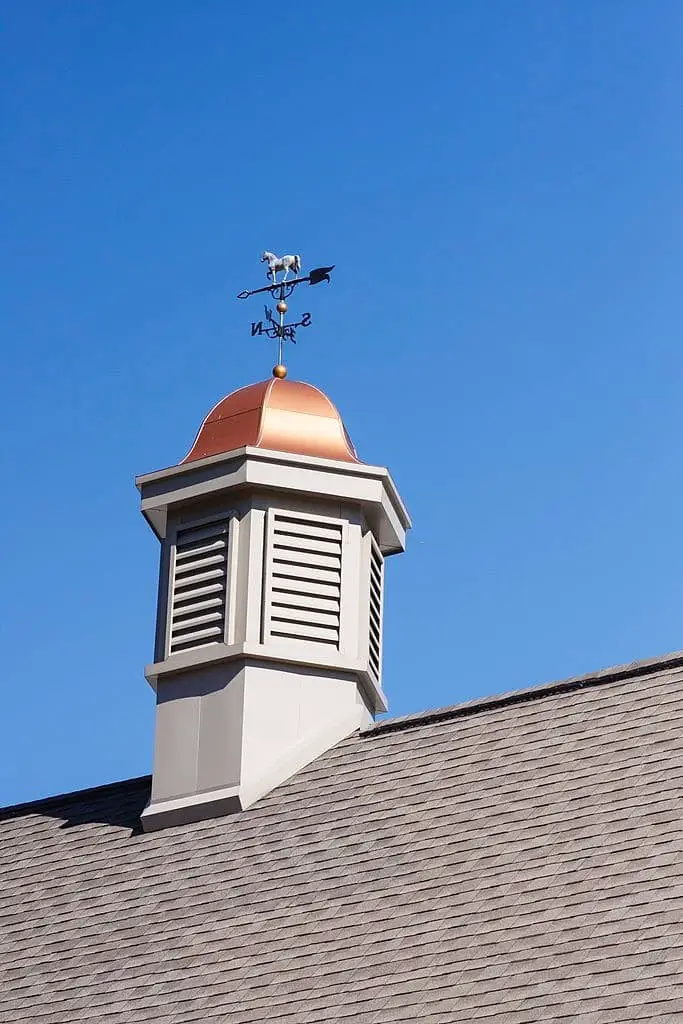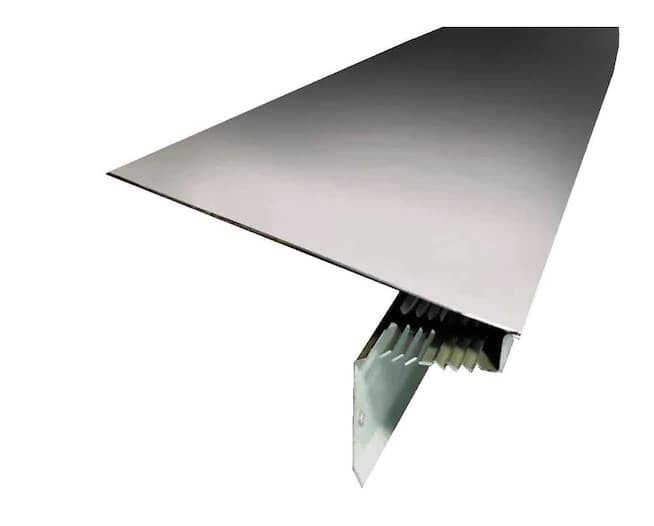13+ Different Types Of Roof Vents With Pictures
Roof vents are designed to regulate the temperature and airflow within your home’s attic space. By allowing hot air to escape during summer and cold air to enter during winter, they prevent issues that can arise from extreme temperature changes. While different roofs may require unique solutions, all roof vents share a common goal: maintaining optimal roof airflow.
When selecting the right type of roof vent for your home, it’s essential to consider the various options available.
This article will delve into the different types of exhaust and intake vents that can help you achieve a well-ventilated attic space.
By installing the appropriate roof vent, homeowners can enjoy benefits such as increased cost efficiency, extended roof lifespan, and protection from structural damage. Additionally, they can prevent issues like mold growth and ice dams from forming.
The following types of roof vents are featured: wind turbines, power vents, hardwired power roof vents, solar-powered roof vents, off-ridge vents, box vents, ridge vents, cupola vents, and hip vents. Intake vents include gable intake vents, soffit vents, drip-edge vents, over fascia vents.
Frequently asked questions regarding roof vents cover topics such as the importance of roof ventilation, determining the number of required roof vents, using an attic fan in conjunction with a ridge vent, and more.
What are roof vents?
Roof vents are an indispensable component of any roofing system, serving as a vital conduit for airflow within the attic space. Their primary purpose is to prevent overheating during summer months and moisture accumulation during winter, thereby ensuring a healthy and durable roof. However, incorrect installation can have far-reaching consequences, posing significant risks to both physical health and structural integrity.
Inadequate roof vent installation can lead to the formation of ice dams, fostering an environment conducive to mold growth and resulting in substantial increases to your electricity bills. These hazards underscore the importance of proper installation and regular maintenance to guarantee the longevity and efficiency of your roofing system.
Benefits of roof vents
While often overlooked, roof vents play a vital role in maintaining a healthy and safe roof system and overall home environment.
To highlight their importance, let’s dive into four crucial benefits that illustrate their significance: first, they allow for proper airflow and moisture management; secondly, they help to regulate interior temperatures; thirdly, they prevent the buildup of condensation and resulting mold growth; and lastly, they promote a reduced risk of ice dams forming in colder climates.
By understanding these key advantages, homeowners can better appreciate the value of installing a roof vent and ensuring their home remains protected and comfortable.
Gives extra layer of protection
The attic ventilation system works by allowing cool air to enter through intake vents on the roof, while simultaneously releasing warm and humid air through exhaust vents. This clever design ensures that the attic space remains well-ventilated, preventing issues like overheating during the summer months and ice dams forming in the winter.
Offers cost efficiency
When your air conditioning (AC) and fans aren’t able to circulate cool air effectively, they’re forced to work harder to maintain a comfortable temperature, resulting in higher electricity costs. This is particularly true during hot summer months when the air feels thick with heat.
Increase roof’s lifespan
When attic overheating occurs, the consequences can be severe. The drying out of shingles and underlayment can lead to cracking, compromising the integrity of the roof structure. Furthermore, a shrunken roof interior can have far-reaching effects, including increased energy bills and potential damage to insulation, rafters, and other supporting structures. In the long run, these issues can result in costly repairs and even necessitate premature replacement of the entire roofing system.
Prevents structural damage
By serving as a deterrent for moisture buildup, roof vents play a crucial role in maintaining a dry and healthy environment. As hot, humid air rises through the roof, it’s essential to have an exhaust vent system in place to prevent the formation of ice dams. If left unchecked, excessive moisture can lead to mold growth, compromising not only the aesthetic appeal of your home but also its structural integrity.
Types of roof vents
Roof vents are a crucial component of any home’s ventilation system, with two primary types: exhaust and intake. The fundamental principle governing their function is straightforward – exhaust vents remove stale air, while intake vents introduce fresh air. This dichotomy is essential for maintaining a healthy indoor environment. Let us delve into the various options available to homeowners seeking optimal roof vent solutions for their properties.
Types of Exhaust Vents
Exhaust vents play a crucial role in maintaining a healthy indoor environment by efficiently removing moist or humid hot air from attics and roofs, promoting optimal air circulation throughout the home. These installations, designed to fit seamlessly into roof systems, are available in various forms, each boasting unique visual and functional characteristics that cater to specific needs.
Wind turbines (Whirlybird ventilation)

One of the most recognizable and enduring forms of exhaust vents is the spinning type. This manual system relies solely on air circulation rather than electricity. As the vent spins, it allows hot or stale air to escape. Despite being an older technology, this design remains a top choice for windy locations, provided there is a minimum wind speed of 5MPH.
Additionally, spinning exhaust vents are known for their durability and affordability compared to other types, making them a practical option for many applications.
Power vents

Electric-powered attic vents, also known as power vents, come in two main types: hardwired power roof vents and solar powered roof vents. Typically mounted on the roof or in the gable, these devices are designed to provide effective ventilation for homes. Unlike traditional roof vents, electric-powered options are characterized by their compact size and low profile, making them easier to blend seamlessly with a home’s exterior aesthetic.
The fan-based operation of power vents allows for efficient removal of hot and humid air from the attic space, resulting in improved indoor air quality and reduced risk of moisture-related issues. While the initial investment may be higher compared to traditional ventilation solutions, the benefits of quiet and energy-efficient operation make them an attractive option for homeowners seeking a reliable and effective attic ventilation solution.
Hardwired power roof vents
The most widely used power roof vent connects directly to the home’s wiring system, typically attaching to the thermostat but also offering manual operation through a switch. This type of vent often pairs well with an intake vent. When hardwired, it tends to work best in conjunction with soffit vents. A notable advantage is that they automatically push air out when needed, making them effective for capturing stray air.
However, this convenience comes at a cost: the AC’s efficiency is compromised, potentially leading to higher monthly electric bills.
Solar-powered roof vents

Solar-powered roof vents offer a unique and eco-friendly solution for ventilating your home. These devices harness the energy of the sun to charge, eliminating the need for electricity or batteries. With various styles available, they can be installed on the roof or gable, providing flexibility in their placement. While ideal for sunny locations, it’s essential to note that solar-powered vents may not be as effective at pushing air out as hardwired power options.
Nevertheless, they provide a reliable and sustainable way to keep your home well-ventilated.
Off-ridge vents

While less common than box vents, off-ridge vents require a cutout in the roof during installation, typically near the ridge line. Their primary function is to vent moist, hot air out of the attic, helping to regulate the temperature and humidity levels inside the home. However, this type of vent has limited coverage, making it necessary to install multiple units throughout the entire roof to achieve an effective exhaust system.
Box vents

The box vent, often found perched atop roofs where people enjoy some relaxation time, is a type of ventilation system that doesn’t rely on electricity. Its simplicity makes it an ideal choice for open attic designs. Furthermore, it pairs seamlessly with soffit intake vents. While it may not be the most efficient solution for large homes, as it requires multiple installations to cover significant areas, it remains a popular option for many homeowners.
Ridge vents

The latest advancement in exhaust ventilation technology has given rise to a game-changing innovation – peak-mounted roof vents. These specially designed vents are engineered to seamlessly integrate onto sloped roofs at their peak, rendering them virtually invisible to the naked eye. In terms of performance, these vents excel at providing even airflow distribution across the entire roof surface, rather than being confined to specific areas.
While they may come with a higher upfront cost, they ultimately prove to be a cost-effective solution in the long run. It’s essential to note, however, that this vent type may not be the most suitable option for homeowners who rely on soffit intake vents – careful consideration should be given before making a decision.
Cupola vents

A traditional ventilation option, older than wind turbines, can be spotted in Spanish or Mediterranean home designs and even in church convents. Characterized by their imposing size, these vents are typically installed along the roof’s ridge and boast a shed-like design that allows for continuous airflow through side holes.
While they may be pricier compared to other vent types, this option offers an added touch of aesthetic flair, making it a viable choice for those seeking a unique ventilation solution.
Hip vents
The hip roof vent, also resembling a box vent in shape, is a pyramid-shaped structure attached to the seams of hip roofs. This design allows it to be covered with shingles, making it a seamless integration into your home’s exterior. Its low profile and high effectiveness make it an attractive option for homeowners, as it blends effortlessly with their property’s design.
While not inherently cost-effective on its own, combining it with a soffit vent can further reduce expenses without compromising performance.
Types of Intake Vents
In contrast, intake vents operate by drawing in warm air and re-circulating it through an exhaust vent system, thereby facilitating a more efficient cooling process within the home. The following are some of the most prevalent types of intake vents worth exploring.
Gable intake vents

Triangular intake vents occupy the apex of a roof’s gable and provide efficiency in ventilation. However, their effectiveness is contingent upon the installation of screens to deter insect infestation. A limitation of these vents lies in their reduced coverage, which may not be sufficient for homes with fewer or single gables. Nonetheless, they can still contribute to overall airflow when strategically placed and paired with complementary venting solutions.
Soffit vents

A popular choice for ventilating homes with a unique design, this intake vent is often installed under eaves or peaks to effectively exhaust hot and humid air through its flexible mesh-like material. Its versatility makes it an excellent match for various types of roof vents, including hardwired power roof vents, box vents, ridge vents, and hip vents. Not only does it provide efficient ventilation, but it’s also a budget-friendly solution that gets the job done.
Drip-edge vents

For homeowners who don’t have the luxury of a dedicated soffit space, drip-edge vents offer a convenient solution for installing ventilation systems. By attaching to the roof’s drip edge, these vents feature a netted design that allows for unobstructed airflow and efficient heat dissipation. While not as straightforward to install as other vent options, drip-edge vents excel in compact spaces where every inch counts.
When paired with an exhaust vent, they can provide a seamless ventilation experience. However, installation can be more challenging than with other models, making it essential to carefully consider this factor when selecting the right vent for your home.
Over fascia vents
When it comes to protecting your roof’s hip and valley areas, over fascia vents prove to be an ideal solution. In cases where there are no eaves or edges to attach a traditional vent to, these specialized intake vents excel at providing efficient airflow for roofs with broader surfaces.
FAQs on Roof Vents
Beyond exploring the various types of roof vents, it’s essential to consider a few frequently asked questions (FAQs) to ensure a successful and effective installation. By addressing these common concerns, homeowners can optimize their roof vent setup for improved ventilation and overall building performance.
Why do we need roof vents?
Without roof vents, your attic space is susceptible to overheating, which can lead to a multitude of issues. Firstly, excessive heat exposure can cause shingles to crack and other structural components to deteriorate. Moreover, a scorching roof can exacerbate the circulation of hot air within your home, posing potential health risks and threatening the functionality of appliances that are already strained in these conditions.
How many roof vents should you have?
When it comes to determining the number of vents needed for a given roof area, a general guideline is that one vent can effectively cover 300 square feet of roofing space – as long as there’s already a vapor barrier in place. However, if your home lacks this crucial barrier, you’ll want to install one vent per 150 square feet to ensure adequate coverage.
It’s essential to get this ratio just right, as having too few or too many vents can have negative consequences for the overall performance and longevity of your roofing system.
Do I need an attic fan if I have a ridge vent?
In most cases, the absence of an attic fan requirement stems from two primary factors. Firstly, a sufficiently long ridge and sufficient ridge vent installations, which collectively provide adequate airflow throughout the attic space. Alternatively, if there is ample clearance at the roof’s base, allowing for the installation of soffit vents, this can also render an attic fan unnecessary.
Which is better: ridge vent or roof vent?
Ridge vents have several advantages over traditional roof vents, with three key benefits that set them apart. Firstly, their strategic location atop the peak of a roof allows for more effective release of humid air. This is particularly important in regions with high humidity levels or in homes prone to moisture buildup. Secondly, continuous ridge vents can provide an expansive opening for air circulation, making them ideal for large or multi-story structures.
Finally, their sleek and unobtrusive design means they blend seamlessly into the roof’s profile, preserving the home’s aesthetic appeal.
How much are roof vents?
The cost of installing a roof vent can vary significantly, ranging from $300 to $800, depending on the type, quantity, and size of the unit. To provide a more precise estimate, average costs for specific types of roof vents are as follows: ridge vents typically fall within the $300-650 range, while solar-powered options cost between $200-800. In contrast, hardwired power roof vents can be installed for $100-700, and cupola exhaust vents usually cost between $100-550.
Where to place roof vents?
To effectively utilize your roof vents, it’s crucial to strategically position them. Intake roof vents are best installed on the lower sections of the roof, such as the eaves or hips, allowing for optimal airflow and pressure differences. Conversely, exhaust vents should be mounted higher up on the roof, typically near the peak, where warm air can escape and promote efficient ventilation.
How far apart should roof vents be installed?
When it comes to installing multiple roof vents, another crucial aspect to consider is the proper spacing between them. A general guideline is to ensure that each vent has a minimum of one square foot of unobstructed space around it, with this buffer zone scaling proportionally to the overall attic area. For instance, for every 150 square feet of attic space, you should leave at least one square foot of empty space between adjacent vents.
Can a roof have too much ventilation?
When it comes to roof ventilation, it’s essential to strike a balance between adequate airflow and potential drawbacks. One significant concern is the impact on electricity bills, which can skyrocket if too many roof vents are installed. Another issue that arises from over-ventilation is increased moisture accumulation. This excess moisture can seep into structural weak spots, ultimately leading to leaks and further damage.
How do you know if the attic is properly vented?
To inspect the effectiveness of your roof vent, try a few simple tests. One method involves checking the ceiling during the hottest part of the day. If it feels uncomfortably warm to the touch, it may indicate that your roof vent is underperforming. Conversely, if you notice significant ice buildup in the eaves or excessive moisture in the attic during winter months, this too can be a sign that the vent is not functioning as intended.
By conducting these straightforward checks, you’ll gain valuable insights into the condition and performance of your roof vent.
Does spray roof foam need to be vented?
A roof deck underlayment installed with spray foam is an exceptionally effective air-tight insulation material for roofing systems. Its primary purpose is to eliminate all airflow, thereby cooling the attic air that rises into it. As a result, the need for roof vents diminishes significantly when spray foam is already used as a underlayment.
Can roof vents get clogged?
You can identify a clogged drain system in your home by paying attention to three telltale signs. Firstly, slow draining pipes that struggle to perform their usual function are a clear indication of an issue. Secondly, bubbles forming in the toilet bowl immediately after flushing it is another sign that something’s amiss. Thirdly, if you notice a foul smell emanating from your drains or permeating the entire perimeter of your property, it’s likely that your sewage system has become clogged.
How does a roof vent help in plumbing?
One often overlooked benefit of a roof vent is its impact on the performance of drain pipes. In fact, many homeowners are unaware that the fresh air circulated by the roof vent plays a crucial role in maintaining proper water flow through these pipes. This is because the roof vent helps to regulate atmospheric pressure within the sewage or waste system, allowing for a smooth flow of wastewater.
Specifically, the roof vent ensures that exhaust gases are properly ventilated out of the system, thereby maintaining the ideal balance of atmospheric pressure.
Can two different exhaust vents be used at the same time?
While using roof vents and solar tubes simultaneously might seem like a great idea, there’s a crucial consideration: it could lead to a short circuit in your attic ventilation system. When this happens, you’re not only compromising the efficiency of your roof vent but also making your entire setup more prone to weather-related damages.
Conclusion
Roof vents often get overlooked as mere afterthoughts in the grand scheme of a home’s overall functionality. However, they play a crucial role in maintaining optimal air circulation and temperature regulation. By efficiently expelling excess fumes and heat during summer months and circulating warmer, more humid air during winter, roof vents help create a comfortable living space. With various types available, it’s essential to make an informed decision when selecting the best vent for your home.
Furthermore, pairing different types of roof vents can result in enhanced performance. When considering options, factors such as cost, efficiency, durability, and performance should also be taken into account. Ultimately, investing in a high-quality roof vent can greatly impact the comfort and livability of your home.
Related Posts
When it comes to enhancing the exterior look of your home, one crucial aspect is selecting the right color for your garage door. This decision not only boosts curb appeal but also creates a harmonious visual connection with the rest of the house. For instance, pairing a yellow house with the perfect shade of garage door can be achieved by considering complementary colors that create a sense of balance and harmony.
On the other hand, a green house can be beautifully matched with a garage door color that complements its natural hues. In addition to these aesthetic concerns, homeowners must also ensure their roof is in good condition. Identifying signs of wear and tear can help prevent costly repairs down the line. Furthermore, those looking to become roofing contractors themselves can follow a step-by-step guide to learn the ins and outs of the trade.
Ultimately, when it comes to choosing the right materials for your roofing project, having an ultimate guide at your disposal is invaluable.






